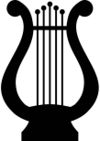English country dance
A country dance is any of a very large number of social dances of a type that originated in the British Isles; it is the repeated execution of a predefined sequence of figures, carefully designed to fit a fixed length of music, performed by a group of people, usually in couples, in one or more sets. The figures involve interaction with your partner and/or with other dancers, usually with a progression so that you dance with everyone in your set. It is common in modern times to have a "caller" who teaches the dance and then calls the figures as you dance. Country dances are done in many different styles.
As a musical form written in 2/4 or 6/8 time, the contredanse was used by Beethoven and Mozart. Beethoven's 6 Ecosaises WoO83 are dated to 1806. Mozart's 6 Ländlerische Tänze, K.606 are dated to 1791.
Introduced to South America by French immigrants, Country Dance had a great influence on Latin American music as contradanza.
The Anglais (from the French word meaning "English") or Angloise is another term for the English country dance. A Scottish country dance may be termed an écossaise. Irish set dance is also related.
Characteristics
A set is a formation of dancers. The most common formations are longways for as many as will, i.e. couples in long lines, and squares, consisting of four couples. The longways formation occurs in over 12,000 modern contra dances; it was also the most popular formation in all the dance publications of the 18th and early 19th centuries. In 2003, Burleson's Square Dancer's Encyclopedia[9] listed 5125 calls or figures. Circles and fixed-length longways sets are also very common, but the possible formations are limited only by the imagination of the choreographer.
Thomas Wilson, in 1808, wrote,
- "A Country Dance is composed of an indefinite number of persons, not less than six, but as many more as chuse, but six are sufficient to perform any figure in the treatise." Wilson was writing about his own period. In fact, there are numerous dances for two couples, and quite a few for three or five dancers.
A figure is a pattern that the dancers trace along the floor, simple ones such as Circle Left are intuitive and can be danced with no prior knowledge, while complex moves such as Strip the Willow needed to be taught. The stepping and style of dancing varies by region and by period.
Wilson, in 1820, wrote,
- "Country Dance Figures are certain Movements or Directions formed in Circular, Half Circular, Serpentine, Angular, Straight Lines, etc. etc. drawn out into different Lengths, adapted to the various Strains of Country Dance Music." Again, the possible figures are limited only by the imagination of the choreographer. Examples of some of the figures are provided in the Glossary of country dance terms.
The music most commonly associated with country dancing is folk/country/traditional/historical music, however modern bands are experimenting with countless other genres.
While some dances may have originated on village greens, the vast majority were, and still are, written by dancing masters and choreographers.
Each dance consists of a series of figures, hopefully smoothly linked together, designed to fit to the chosen music. The most common form of music is 32 bar jigs or reels, but any music suitable for dancing can be used. In most dances the dancers will progress to a new position so that the next time through the music they are dancing with different people.
While English folk dance clubs generally embrace all types of country dance, American English country dance groups tend to exclude modern contra dances and square dances.
Country dancing is intended for general participation, unlike folk dances such as clogging, which are primarily concert dances, and ballroom dances, in which dancers dance with their partners independently of others. Bright, rhythmic, and simple country dances had appeal as a refreshing finale to an evening of stately dances such as the minuet.
Historically, the term contra dance is just another name for a country dance. Howe, in 1858, wrote, "The term "Country Dance" is the one invariably used in all books on dancing that have been published in England during the last three centuries, while all works issued in France within the same period employ the term Contra Dance, or in French "Contre Danse". As the authority is equally good in both cases, either term is, therefore, correct. The Country or Contra Dance has been one of the most popular amusements in the British Isles, France, and other continental countries from time immemorial".[16] However, "contra dance" is most commonly used today to refer to a specific American genre called contra dance.
- More information is available at [ Wikipedia:English_country_dance ]
| Articles related to: Dance and/or Competitive dance |
|---|
|
|
|
External links
Chat rooms • What links here • Copyright info • Contact information • Category:Root
